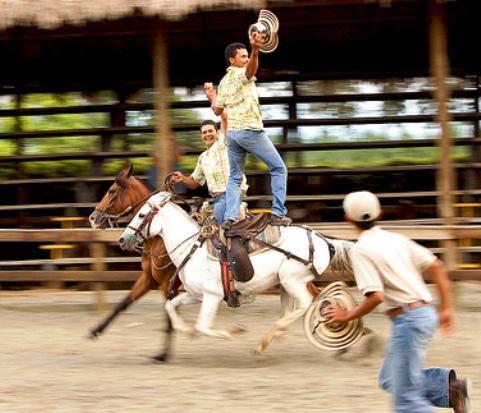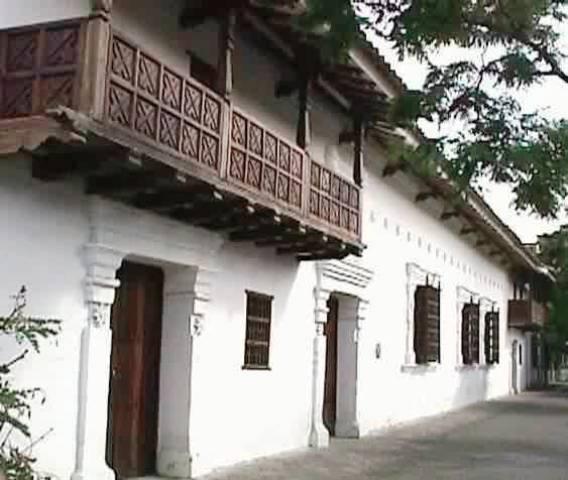Cartago, Valle del Cauca, Colombia
Suggest Place to Visit
1092
Track to location with GPS |
 |
The founding of Cartago is part of the expansion process of the Spanish conquest carried out in southwestern Colombia. Jorge Robledo, later Mariscal, leaves Cali, with precise orders to strengthen territorial control, and after carrying out the pertinent explorations, he arrives in the Quimbaya Province, finds the Indians of the same name, who according to the chroniclers were around 80,000 and there, in the lands of Cacique Consota, on the banks of the Otún River, he founded the city of Cartago on August 9, 1540.
The city was given the privilege of having a Foundry House, it appraised and melted the gold of the neighboring cities Anserma, Arma and Toro, it was an obligatory step on the route between Cartagena and Santafé to Popayán and Quito, it served as a point advanced for new military expeditions in the conquest of Chocó, and organized defensive attacks against the continuous attacks of the Pijaos Indians, a group that for more than a hundred years opposed Spanish domination.
This first city remained for 150 years in the original site of its foundation, but due to the decline of the indigenous population, the decrease in the uptake of gold, the provision of the road to Guacanas in Huila, which shortened the distance between Popayán and Santafé, in the search and economic adaptation of new lands for cattle ranching, were reasons enough for the city to request authorization to transfer to the Savannas, between the Cauca and La Vieja rivers, a site that it has occupied ever since. The transfer protocol was carried out on April 21, 1691, in a procession presided over by the priest Manuel De Castro y Mendoza.
In this new site and throughout the 18th century, Cartago was reborn, cattle ranches intensified, it became a supply center for mines and slaves to Chocó, it was the intermediate place between Cartagena and Quito, a privilege that helps to activate trade.
Carthage during the independence and other civil wars of the 19th century, is used as a permanent military seat, some large houses are adapted for barracks, the mandatory contributions to sustain the wars and the continuous looting to which it was subjected, accelerate its impoverishment, are also presented exodus from Cartagueños.
With the expectations of the Antioquia colonization, they are trying to advance companies such as the Railroad, the Aqueduct and others, but the impact of the territorial dismemberment of the early twentieth century, which segregates a large percentage of its territory, added to the opening of new roads. , they leave Cartago as it is today, located between two large regions that developed export economies in the north, the coffee axis with coffee, and in the center and south of the Valley with sugar cane.
Today, the geographical location is again our option of progress, the point of connection for the region and the outside, falls on the Santa Ana International Airport.
Cartago is a Colombian town located north of the department of Valle del Cauca. The city is known as La Villa de Robledo and is considered the city of the ´´Most cheerful sun in Colombia´´. It was founded in 1540 in the place where Pereira is today, by small Spanish settlements promoted by Jorge Robledo. The city has an average total population of 160,000 inhabitants.
The viceroy's house, the Pedro Morales Pino conservatory, some religious temples such as the Guadalupe church, La Isleta park and the Santa Ana Airport stand out as architectural and tourist references.
Geography and climate
The city is located in the Colombian department of Valle del Cauca, specifically in the region known as the North of the valley, being the gateway to it. It is located in the Andean Region of Colombia, on a plain at about 917 meters above sea level. The Cauca and La Vieja rivers pass very close to the city.
Located north of the department. It limits the north with the department of Risaralda; to the east with Ulloa, Alcalá and the department of Quindío; to the south with Obando and to the west with Toro and Ansermanuevo.
The city has a warm climate with an average temperature of 26 ° C. For a reason it is called ´´the happiest sun in Colombia´´
From there, tourism through its tutelary river has attracted many national and international tourists.
It limits to the north with the department of Risaralda, to the east with Ulloa, Alcalá and the department of Quindío, to the south with Obando and to the west with Toro and Ansermanuevo.
Among the economic activities on which the department depends are agriculture, livestock, commerce and small industry.
Villa de Robledo, as it is known, is a point of convergence of the Antioquia and Valle del Cauca cultures. Most of the territory is flat or slightly undulating. Towards the east, there are mountains of low elevation. They are warm lands, watered by the Cauca and La Vieja rivers and other minor streams.
It gathers in its urban area important samples of colonial architecture, which are testimony to a historical past that began in the 16th and 17th centuries. Today it is one of the Colombian municipalities with excellent projection, both nationally and internationally.
Places to visit in the city center
The Viceroy's House
It is located one block from Bolívar Park, it is an example of the Mudejar style, with its wide corridors, its frescoed patios and lower gardens, it was completed in 1770. It was built in the second half of the 18th century and is due to its name It was erected to accommodate Viceroy Ezpeleta on his visit to Carthage, which was never carried out.
It is a work of Don Sebastián de Marisancena; The house has two floors on the main facade, it is built entirely of stone and cut brick, forming pillars, columns, capitals, corridors and decorative moldings.
Comments
We don´t have yet any comments about:
Carthage
Carthage
Be the first to leave a comment as it is very important to inform other people
Outros locais a visitar
Within a radius of 20 km from:Carthage
Parque Panaca |
| 18,2 Km |
 |
Hotel reservation near Carthage within a radius of 20 km
Why to book with TOURISTIC ROUTES
The best prices
Our partnerships with the world´s largest operators offer research on the best market prices.
More options
At Rotas Turisticos you can book the hotel, buy the air ticket, book the transfer from the airport to the hotel and vice versa, book the local excursions, rent the car, take travel insurance and consult the places to visit and where to go.
Holiday Tips & Destinations
Hundreds of holiday destinations with all the options that allow you to easily choose the destination that best suits your dream vacation.
TOURISTIC ROUTES
Links





